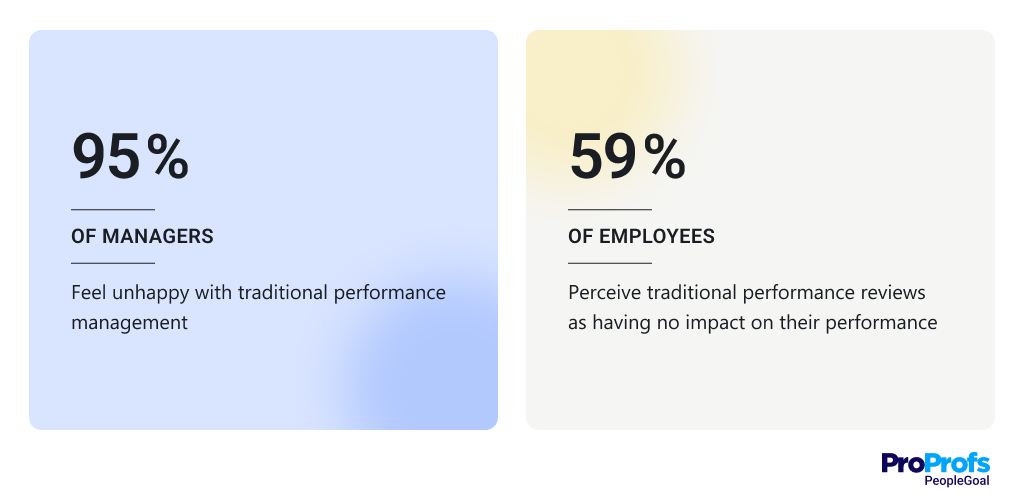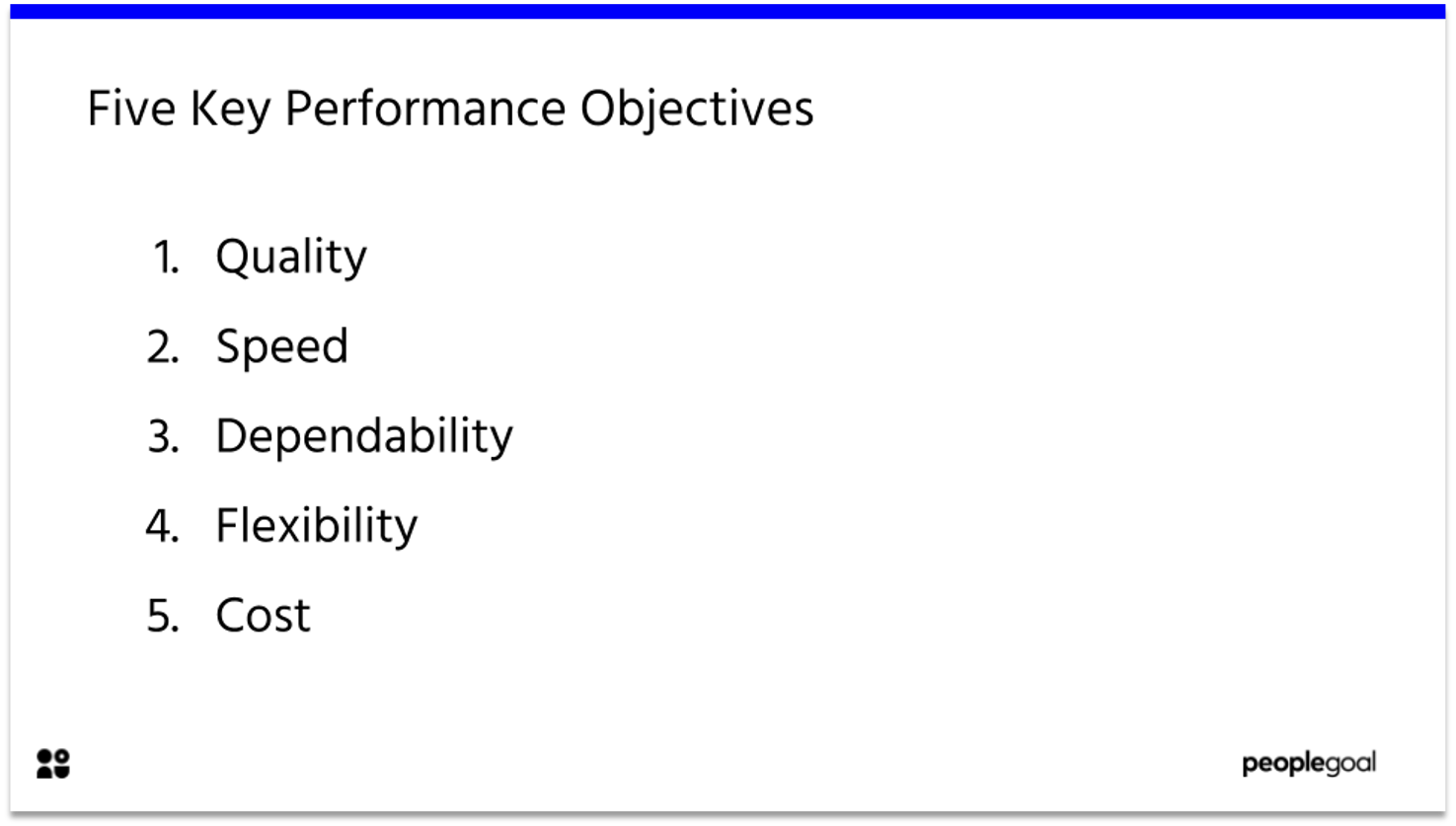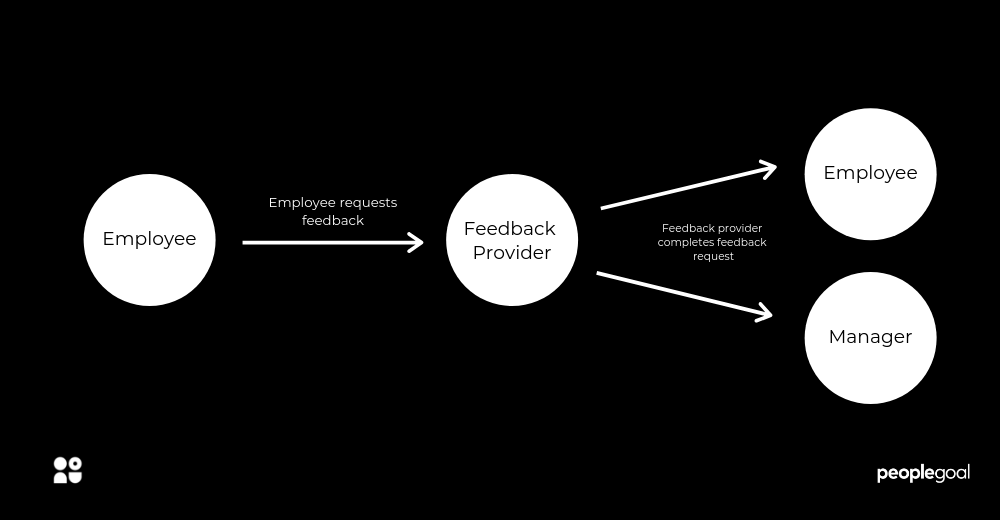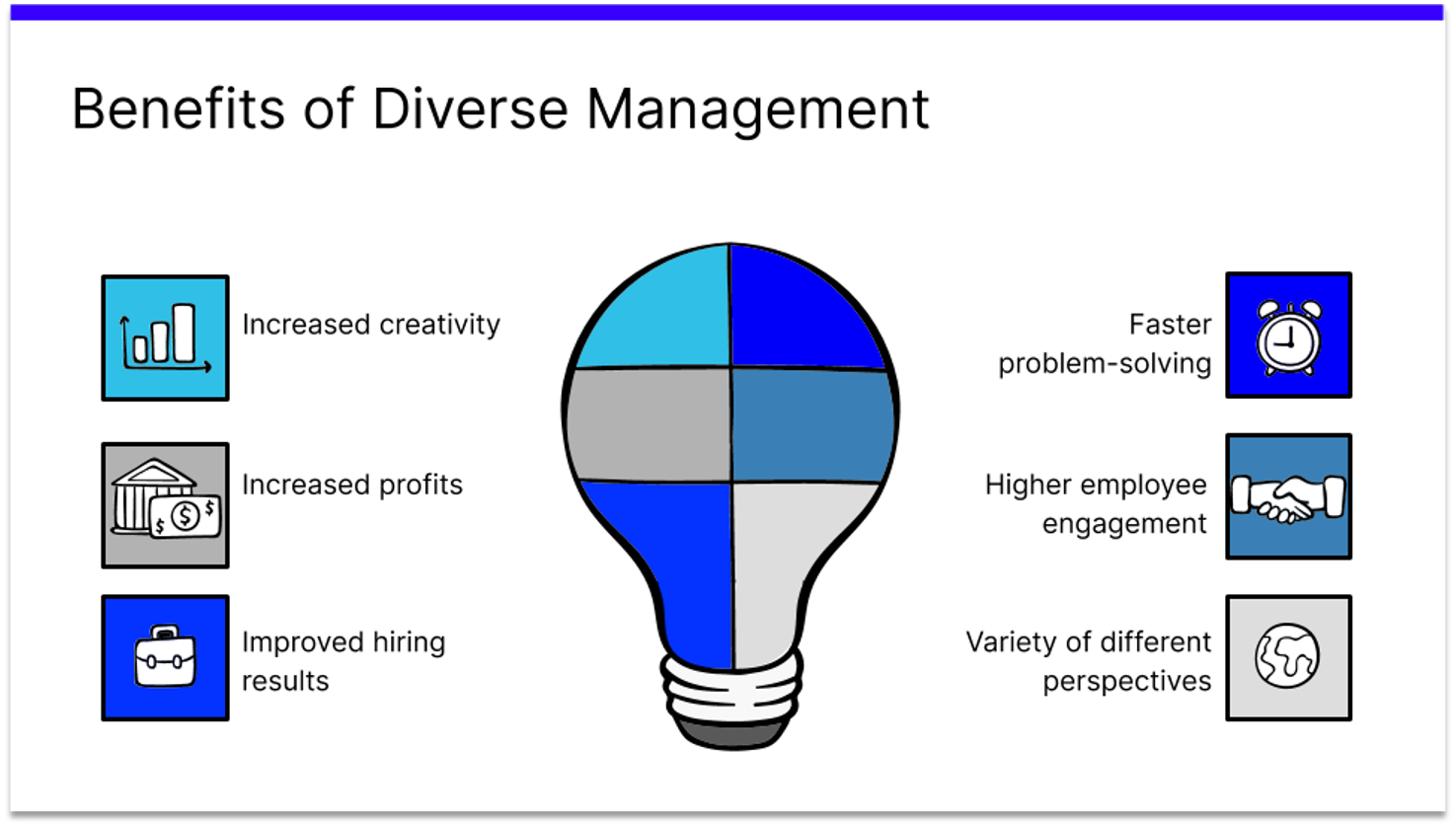Before we jump to methods and examples of employee performance management, let’s bust some myths.
Myth #1: It’s just your boss pointing out what you’re doing wrong.
Myth #2: It’s a once-a-year ordeal everyone dreads.
Myth #3: It’s all about paperwork and boring meetings.
But here’s the thing: none of this captures what performance management really is.
After leading HR functions across diverse industries for over a decade, I’ve seen how transformative employee performance management can be when done right. It’s not just about meetings or reviews—it’s about driving growth, aligning goals, and empowering teams.
So, what actually is performance management? And how do you make it work?
In this detailed guide, I’ll bust the myths, answer your burning questions, and share strategies to get the best results.
Let’s dive in.
What Is Performance Management?
Employee performance management is the process that includes setting clear goals, tracking progress, and giving feedback to keep everyone in the team on the right path.
Think of it like managing a sales team: if you want to hit quarterly targets, you’d track individual sales, coach underperformers, and celebrate top sellers.
For example, if Jim in the marketing team needs to boost campaign reach, you’d set clear metrics, review his progress regularly, and help him tweak strategies as needed. It’s all about aligning the team, improving skills, and achieving business goals.
Why Is Performance Management Important?
After understanding what employee performance management is, let’s move to why employee performance management is important for a team and a business:
- Keeps Everyone Focused – It’s like giving your team a map to follow so they know exactly where they’re headed.
- Boosts Motivation – Regular check-ins and feedback show employees their work matters, which keeps spirits high.
- Improves Performance – Spot issues early, offer coaching, and watch your team level up their skills.
- Aligns Goals – It ensures individual tasks align with the big-picture goals of the company—no wasted effort.
- Encourages Growth – Helps employees grow by identifying strengths and areas to improve.
- Recognizes Achievements – Celebrating wins keeps everyone engaged and builds a positive work environment.
What Are the Different Performance Management Methods?
Some of the major methods or types of performance management systems are as follows:
1. Management by Objectives (MBO)
Employees and managers collaboratively set specific, measurable goals aligned with organizational objectives. Progress is reviewed periodically to assess outcomes and make adjustments.
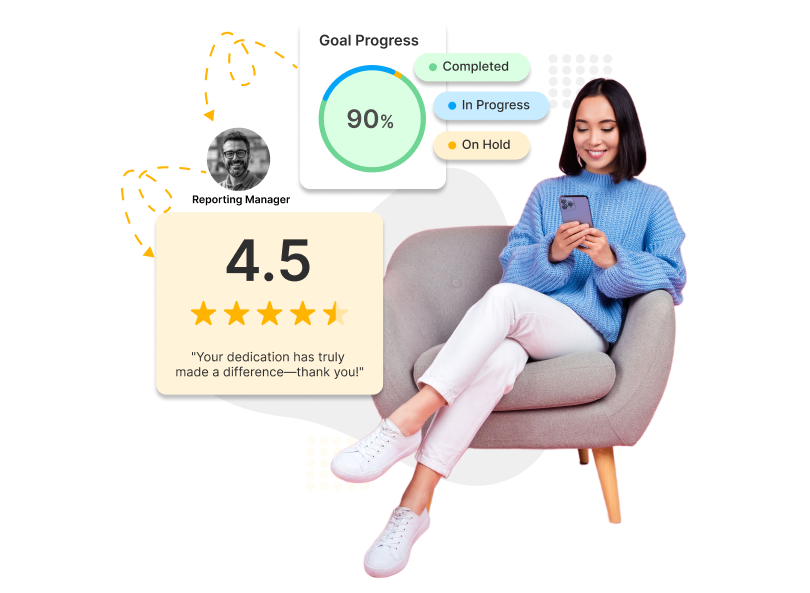
Key Features:
- Involves SMART (Specific, Measurable, Achievable, Relevant, Time-bound) goals.
- Focuses on achieving predefined objectives.
- Encourages active participation in goal setting.
- Aligns individual objectives with organizational strategy.
- Relies on regular performance reviews.
Example: A sales manager sets a target with their team to increase monthly sales by 15% within six months using targeted marketing campaigns.
2. 360-Degree Feedback
This method involves collecting employee performance feedback from multiple sources, such as peers, subordinates, managers, and customers.
Key Features:
- Feedback is gathered from a variety of stakeholders.
- Includes anonymous inputs to encourage honesty.
- Provides a holistic view of employee performance.
- Measures performance from both internal and external perspectives.
- Identifies gaps and overlaps in perceived performance.
Example: A project manager receives feedback from team members, clients, and their supervisor about their leadership and communication skills.
3. Competency-Based Performance Reviews
Employees are assessed on their ability to demonstrate role-specific competencies, focusing on skills, behaviors, and knowledge essential for their job.
Key Features:
- Uses a predefined competency framework.
- Aligns evaluations with role-specific requirements.
- Identifies strengths and areas needing improvement.
- Focuses on measurable skills and behaviors.
- Facilitates personalized development plans.
Example: Software developers are evaluated based on their proficiency in coding languages, debugging skills, and teamwork abilities.
4. Behaviorally Anchored Rating Scales (BARS)
This combines quantitative and qualitative methods by linking specific performance levels to observable, role-relevant behaviors.
Key Features:
- Provides clear, behavior-based performance standards.
- Uses real-world examples to define rating scales.
- Reduces ambiguity in performance evaluations.
- Encourages objective feedback through structured criteria.
- Incorporates job-specific behaviors in the assessment.
Example: A customer service agent’s performance is rated based on how they handle difficult customer interactions using specific behavioral benchmarks.
5. Continuous Feedback and Check-ins
Focuses on ongoing communication and feedback between managers and employees, replacing traditional annual performance reviews with frequent discussions.
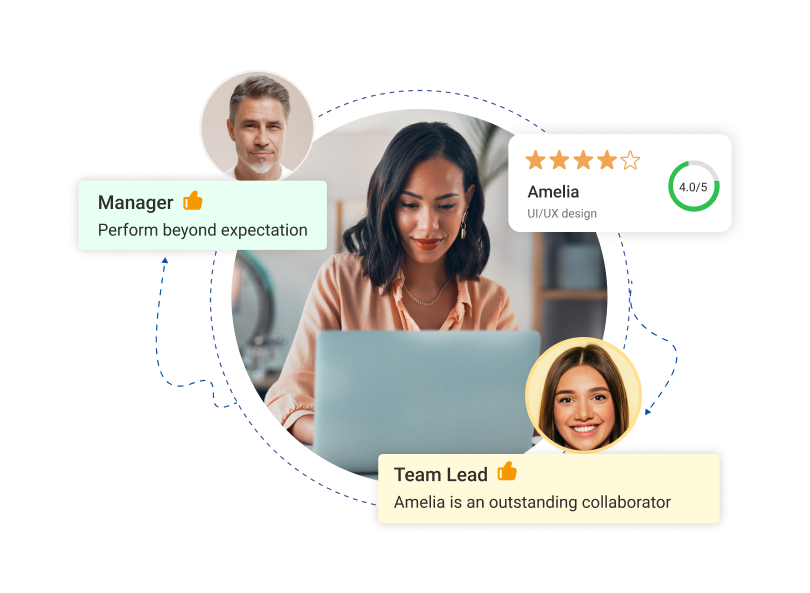
Key Features:
- Promotes regular, real-time feedback.
- Allows for dynamic adjustments to goals and strategies.
- Fosters open and consistent communication.
- Involves short, focused conversations.
- Encourages trust and collaboration between employees and managers.
Example: A marketing manager holds bi-weekly one-on-one meetings with a team member to discuss progress on campaign strategies and immediate challenges.
6. Ranking and Forced Distribution
Employees are ranked against one another, often using a predetermined performance distribution to identify top, middle, and low performers.
Key Features:
- Differentiates performance levels using rank orders.
- Employs a bell-curve distribution system.
- Forces managers to identify high and low performers.
- Highlights performance disparities within teams.
- It may involve predetermined quotas for each rank category.
Example: In a team of 20, the top 10% are rated as “outstanding,” the middle 70% as “meets expectations,” and the bottom 20% as “needs improvement.”
7. Self-Assessment
Employees evaluate their own performance, providing insights into their achievements, challenges, and areas for growth, often paired with managerial input.
Key Features:
- Encourages employee self-reflection on performance.
- Promotes ownership of personal development goals.
- Allows employees to highlight unrecognized achievements.
- Often includes structured forms or criteria.
- Used in conjunction with other evaluation methods.
Example: An employee completes a self-assessment form highlighting their progress on annual goals and suggesting areas where they need additional support.
8. Key Performance Indicators (KPIs)
Performance is measured using specific, quantifiable metrics directly tied to job responsibilities and broader organizational goals.
Key Features:
- Focuses on measurable and objective performance metrics.
- Tracks progress against predefined benchmarks.
- Aligns individual KPIs with organizational priorities.
- Uses regular reporting to monitor performance trends.
- Supports data-driven decision-making.
Example: A digital marketer’s performance is evaluated based on metrics like website traffic, conversion rates, and social media engagement.
9. Balanced Scorecard
Evaluates performance across multiple dimensions, including financial outcomes, customer satisfaction, internal processes, and learning and growth initiatives.
Key Features:
- Integrates financial and non-financial performance measures.
- Balances short-term and long-term goals.
- Focuses on strategic alignment with organizational objectives.
- Monitors performance across diverse perspectives.
- Promotes a holistic view of success.
Example: A retail chain measures store managers’ performance based on revenue, customer feedback, operational efficiency, and employee development.
10. Critical Incident Method
Managers document significant positive or negative employee actions that affect organizational outcomes, using these incidents for performance evaluation.
Key Features:
- Captures specific, impactful performance examples.
- Focuses on real-life events and outcomes.
- Relies on continuous documentation during the review period.
- Provides detailed, situational feedback to employees.
- Reduces reliance on vague or generalized impressions.
Example: A manager notes how an employee successfully resolved a major client issue within tight deadlines, improving customer satisfaction.
What Are the Stages of Performance Management?
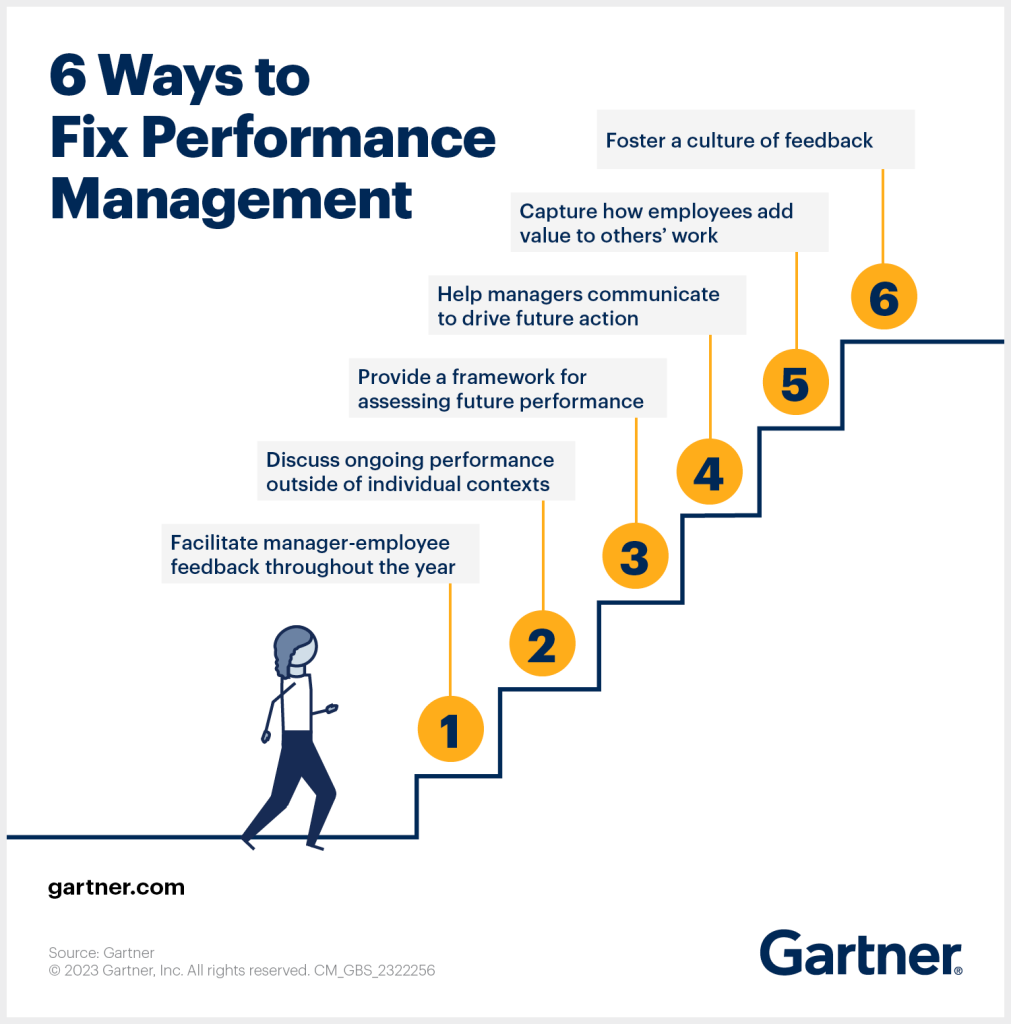
The different stages of employee performance management are as follows:
Stage 1: Setting Strategic Goals With KPIs
Planning is the foundational stage of performance management, where clear goals and objectives are set to align with the organization’s strategy. During this phase, employees and managers collaboratively establish Key Performance Indicators to measure success.
Development plans are created to address skill gaps and set clear expectations. This process provides employees with a sense of direction, ensuring their efforts contribute to organizational priorities while fostering ownership and accountability for their goals.
Stage 2: Progress Monitoring for Real-Time Adjustments With Objectives
Monitoring involves continuous tracking of progress toward established objectives. Managers conduct regular check-ins to assess status, identify challenges, and provide the necessary support to overcome roadblocks.
This stage ensures that employees remain aligned with changing organizational needs and have the resources they require. By maintaining transparency and facilitating timely course corrections, the monitoring stage helps sustain focus and ensures objectives are met efficiently.
One of the key advantages of performance management system is its ability to streamline this process, ensuring that progress is measured effectively and any adjustments are made in real-time.
Stage 3: Skill Development to Bridge Gaps Between Skills & Goals
In the employee development stage, staff are given opportunities to grow their skills and capabilities through training, coaching, and mentoring. Constructive feedback plays a vital role in fostering improvement and guiding employees toward their professional goals.
This stage not only empowers individuals by enhancing their competencies but also boosts morale, job satisfaction, and overall workforce productivity. It ensures employees feel supported in their growth journey, contributing positively to the organization’s success.
Stage 4: Performance Evaluation for Insights & Feedback
The evaluation stage focuses on assessing employee performance against predetermined KPIs and objectives. Performance appraisals, supported by tools like 360-degree feedback, provide a comprehensive understanding of individual achievements and areas for improvement.
This phase highlights top performers for recognition and identifies development opportunities for others. By delivering actionable insights, evaluation strengthens the feedback loop and ensures employees remain motivated and aligned with organizational standards.
Stage 5: Recognition and Rewards to Drive Engagement
The rewarding stage recognizes and celebrates employee achievements, reinforcing a culture of excellence. High performers are acknowledged through monetary rewards like bonuses or salary increments, as well as non-monetary incentives such as promotions or public recognition.
This stage boosts morale and fosters employee engagement by showing appreciation for hard work and dedication. Linking rewards to organizational goals ensures that performance is consistently aligned with broader objectives.
Stage 6: Reflection and Replanning for Continuous Improvement
The final stage involves reflecting on the outcomes of the performance cycle to inform future improvements. Goals and KPIs are revised to align with evolving business priorities, setting a fresh direction for the next cycle. This stage promotes adaptability and ensures the performance management process remains dynamic and effective.
By incorporating lessons learned, the organization fosters a culture of continuous improvement and growth.
Performance Management Best Practices: How to 3x Employee Performance
If you wish to get max out of your employees, here are some performance management best practices you can follow:
1. Set and Communicate Clear Goals
- Set SMART goals that align with your company objectives.
- Break down these goals into actionable steps and ensure employees understand their role in achieving them. I’ve linked a guide above to simplify this for you.
Example: If a company objective is to increase sales by 20%, break this down for your sales team. Set individual goals like achieving 5 new client conversions per month or making 30 cold calls per week. This gives employees clarity on how their daily efforts contribute to the bigger picture.
2. Foster a Culture of Open Communication
- Encourage employees to share ideas and challenges in a transparent, supportive environment.
- Schedule regular one-on-one meetings to provide personalized feedback and build trust.
Example: During a weekly one-on-one, an employee shares a challenge in meeting deadlines. By providing constructive feedback and brainstorming solutions, such as adjusting workflows or prioritizing tasks—you help them feel supported while addressing the problem.
3. Implement the Right Performance Tools
- Use performance management software to streamline tracking and offer actionable insights.
- Leverage 360-degree feedback to gain a well-rounded view of employee performance.
Example: Implementing tools like PeopleGoal allows managers to track progress in real time. Using 360-degree feedback, a team member may realize they’re great at collaboration but need to improve their time management—a key insight for targeted development.
4. Focus on Ongoing Employee Development
- Provide access to workshops, certifications, and training to help employees enhance their skills.
- Pair employees with mentors to guide their career growth and provide support.
Example: An employee interested in project management can be enrolled in a certified training program. Additionally, pairing them with a senior manager provides practical guidance and a sounding board for real-life challenges.
5. Base Decisions on Data and Insights
- Analyze performance metrics to identify trends, strengths, and areas needing improvement.
- Use visualization tools to spot patterns and address potential issues proactively.
Example: If data reveals that productivity dips every Friday afternoon, managers can introduce a flexible schedule or shorter meetings to maintain engagement. Visual dashboards make such patterns easy to identify.
6. Recognize and Celebrate Achievements
- Develop a structured program to reward accomplishments through bonuses, awards, or shoutouts.
- Align recognition with specific contributions to ensure it feels meaningful and personal.
Example: If a team member completes a complex project ahead of schedule, recognize their achievement publicly during a team meeting or give a personalized thank-you note highlighting their contribution.
7. Continuously Review and Improve the Process
- Regularly evaluate the employee performance management system to identify and address gaps.
- Adapt your approach to reflect changing organizational goals and employee needs.
Example: After an annual review, you might realize your goal-setting framework is outdated. By transitioning to quarterly reviews, you can keep goals aligned with fast-moving company changes and give more timely feedback.
8. Empower Employees to Take Ownership
- Involve employees in setting their goals and designing their own development plans.
- Provide resources and tools to help them track progress and take control of their growth journey.
Example: Let employees propose their professional growth paths. If a marketer wants to explore SEO skills, provide access to training tools and dashboards so they can track progress against their development milestones.
How to Measure the Effectiveness of Your Performance Management Process
Measuring the effectiveness of your employee performance management process ensures it aligns with organizational goals and drives meaningful improvements. Here’s a step-by-step guide:
1. Define Your Objectives
Start by identifying the features of performance management and what you wish to achieve.
Is it about improving employee productivity, boosting employee engagement, or aligning individual goals with company objectives?
Clear goals provide a framework for measurement.
Example:
Let’s say your company is struggling with missed project deadlines. You might define an objective to improve team productivity by 15% over the next quarter. A specific goal could be ensuring 90% of tasks are completed on time through enhanced performance reviews and goal tracking.
2. Collect Feedback from Stakeholders
Gather input from employees, managers, and HR teams to assess how the process is perceived. Use anonymous surveys or focus groups to understand pain points, effectiveness, and areas for improvement.
Example:
Imagine employees who feel performance reviews are inconsistent and lack actionable outcomes. You conduct an anonymous survey and discover managers aren’t providing adequate feedback. You could introduce training sessions to help managers give clearer, constructive feedback during reviews.
3. Track Key Performance Indicators
Key performance indicators can help you understand team and employee performance. Here’s a list of KPIs to help you measure performance.
- Employee engagement and participation
- Workplace motivation and drive
- Leadership impact and influence
- Consistency in work quality
- Interpersonal communication and collaboration
- Technical expertise and proficiency
- Goal achievement and outcomes
These KPIs will help you quantify the system’s impact on organizational goals. Here’s a quick guide to get you detailed insights and how to take steps on this topic.
To put this into perspective:
Let’s say you’re tracking goal completion rates and notice that only 60% of team goals are being met. Upon further analysis, you discover a lack of clarity in how goals are set. You could implement SMART goal-setting techniques, ensuring objectives are clear, measurable, and achievable.
4. Assess Employee Development
Analyze if employees are growing through training, upskilling, or career advancement opportunities identified during performance reviews. Increased skill levels or promotions indicate a successful process.
Example:
Suppose one of your marketing team members is interested in digital advertising during a performance review. You sponsor them for a Google Ads certification course. Three months later, they spearhead a campaign that drives a 25% increase in online leads. This is one of the examples where investing in employee development can deliver great results.
5. Monitor Goal Alignment
Evaluate how well individual and team goals align with overall business objectives. Use tools like balanced scorecards to track alignment and progress.
Example:
If your organization’s goal is to increase customer retention by 10%, a customer success manager’s performance objectives could include following up with 95% of customers post-purchase. A monthly scorecard can monitor their progress and impact on overall retention rates.
6. Review Outcomes Over Time
Analyze trends to understand long-term impact. For example:
- Has the productivity improved?
- Are high-performing employees retained longer?
Compare pre- and post-implementation data based on this.
Example:
Imagine you introduced quarterly performance reviews two years ago. Analyzing data, you find that productivity has increased by 20%, and turnover among top performers has decreased by 15%. This validates that your process is driving results over time.
7. Adjust Based on Data
Regularly refine your process based on findings. Incorporate feedback and adapt strategies to meet changing organizational needs.
Example:
If employee surveys reveal that annual reviews feel outdated and unhelpful, you might transition to a continuous feedback model. Managers could provide monthly check-ins to offer real-time coaching and ensure employees stay aligned with their goals.
Also Watch:
Examples of Employee Performance Management
To help you understand the concept better, here are a few performance management examples, along with actions taken and the outcome of the action:
1. Goal Setting and Alignment
Scenario: A multinational corporation wanted to ensure all employees worked toward a common vision and business objectives. To achieve this, they implemented a quarterly goal-setting process. Leaders communicated corporate priorities through workshops and collaborated with department heads to set SMART goals for every team.
Actions Taken:
- Workshops were conducted to communicate the company’s strategic objectives to all employees effectively.
- Managers collaborated with their teams to define SMART goals tailored to individual roles.
- Bi-weekly progress reviews were held using goal-tracking dashboards to ensure alignment and address challenges.
Outcome: This approach led to a 15% improvement in quarterly sales. Employees reported increased clarity in their roles and felt more engaged as they clearly understood how their efforts contributed to the larger organizational goals.
2. Regular Performance Reviews
Scenario: A mid-sized software company struggled with inconsistent employee development and career progression. To address this, they initiated biannual performance reviews. The reviews provided structured opportunities for employees to receive feedback, discuss challenges, and set goals for professional growth while ensuring managers actively supported their team’s success.
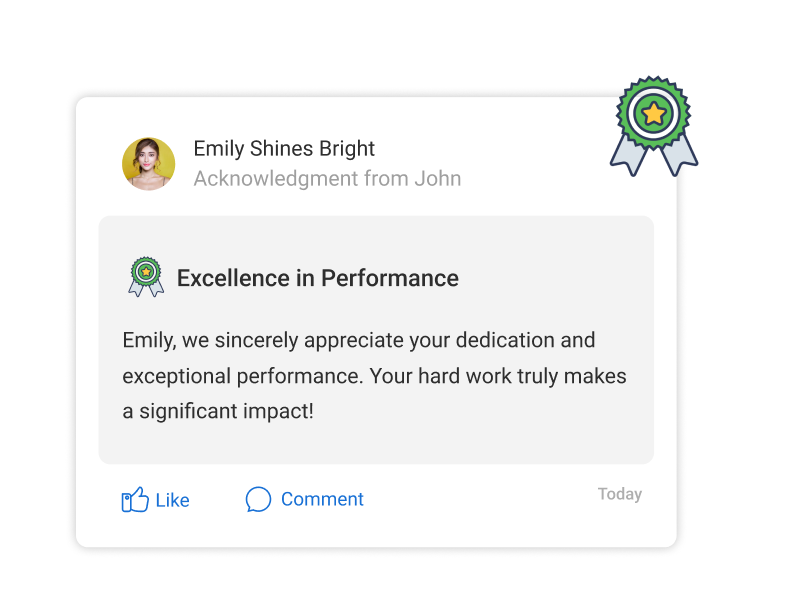
Actions Taken:
- A 360-degree feedback system was introduced, allowing managers, peers, and direct reports to contribute to the review process.
- Employees and managers jointly developed actionable development plans to address skill gaps and career aspirations.
- Professional growth programs were integrated into the review outcomes to ensure employees had access to learning opportunities.
Outcome: Employee turnover reduced by 10% within a year as employees gained clearer paths for growth. Team satisfaction surveys indicated that employees felt more valued and supported in their professional journeys.
3. Continuous Feedback Mechanism
Scenario: A retail chain faced challenges with maintaining consistent service quality across its locations. To tackle this, they introduced a continuous feedback mechanism for frontline staff. The goal was to provide actionable feedback in real-time, ensuring staff could quickly adapt to customer needs and improve service delivery.
Actions Taken:
- A mobile app was launched to enable instant feedback on customer interactions from supervisors.
- Weekly feedback sessions were conducted to provide employees with detailed guidance and actionable suggestions for improvement.
- Regular team meetings were held to discuss trends and share performance management best practices observed across the locations.
Outcome: Over six months, customer satisfaction ratings improved by 20%, and employees reported feeling more confident in their roles. Supervisors noticed a faster resolution of recurring issues, contributing to better overall performance.
4. Employee Recognition Program
Scenario: A financial services firm recognized that their employees needed more acknowledgment for their efforts to maintain morale and productivity. They implemented a structured recognition system that rewarded not only top performers but also those demonstrating consistent dedication and teamwork, fostering a culture of appreciation across the organization.
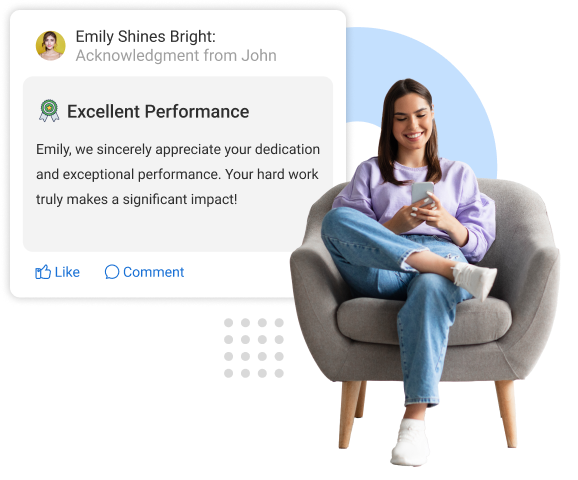
Actions Taken:
- Monthly awards were introduced to celebrate outstanding contributions across various teams.
- A peer-nomination system allowed employees to recognize colleagues for their efforts and achievements.
- Company-wide newsletters and meetings highlighted the contributions of recognized employees to increase visibility and inspire others.
Outcome: Employee morale significantly improved, with a 25% increase in work efficiency. Survey feedback showed that employees felt more valued and motivated to excel in their roles, strengthening team dynamics and collaboration.
5. Training and Development Initiatives
Scenario: An e-commerce company identified critical skill gaps in its workforce that were causing delays in meeting project deadlines. To address this, they launched a comprehensive training and development initiative that focused on equipping employees with the skills they needed to perform better and contribute more effectively to the company’s success.
Actions Taken:
- Customized upskilling programs were developed based on the specific needs of each department.
- Online learning platforms were introduced, offering flexible schedules to accommodate employees’ work commitments.
- Post-training evaluations were conducted to monitor progress and measure the effectiveness of the programs.
Outcome: Team capabilities improved significantly, leading to a 30% reduction in project delays. Employees expressed greater confidence in their abilities, and managers observed enhanced productivity and collaboration within their teams.
Maximize Employee Output With Efficient Employee Performance Management
Effective employee performance management is the cornerstone of driving employee productivity and engagement. By setting clear goals, providing timely feedback, and fostering growth opportunities, organizations can create a motivated and high-performing workforce.
However, managing these processes manually can be time-consuming and prone to inconsistencies.
That’s where the benefits of performance management software prove handy. A tool like PeopleGoal simplifies this journey with features like goal tracking, real-time feedback, and customizable performance reviews. Automating and streamlining performance management empowers managers to focus on what truly matters—nurturing employee potential and effortlessly achieving organizational success.
Ready to 3x Your Teams' Performance?
Use the best performance management software to align goals, track progress, and boost employee engagement.

